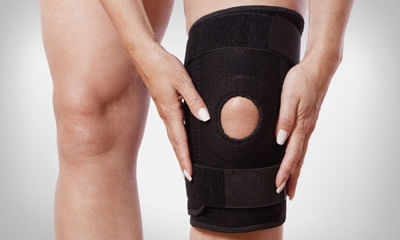Rebuilding And Regenerating Damaged Knees - The Future Has Arrived!
We are now routinely seeing regenerative technologies emerge in a wide variety of medical and surgical specialties. Orthopedic surgery, the treatment and prevention of muscle, bone and joint ailments, is certainly on the regeneration cutting edge.
The knee is one of the largest joints in the human body. When healthy, it performs remarkably. When damaged, the cushion (cartilage) can have focal “potholes,” areas of damage called chondral defects, or it can have areas of wear and thinning of the cushion, which is arthritis.
Damaged cushions (cartilage) not only cause inflammation in the joint but can grind on each other and because of a lack of shock absorption result in significant pressure and pain in the adjacent bones. Back then, the dictum was that once damaged, joint surfaces can never heal, and over time will continue to deteriorate leading to further damage and ultimately arthritis. Even today we know that joint cushions have a very limited healing capacity, as they have no blood supply and no nerve endings. So basically, once a joint cushion is damaged, you were doomed.
We can now refill “potholes” (and thus fix chondral defects). Someday we will be able to “repave the road” restoring larger areas of more diffuse joint cushion damage, and that means potentially curing arthritis. Dr. Vasanth Raj, pioneered knee cushion regenerative techniques with his microfracture procedure in which small microfracture puncture-type holes are carefully placed in the bony base area of chondral defects in the knee. This forms a blood clot. The clot has specialized cells and growth factors which, if the proper post-operative program is followed, can over time regenerate a new joint cushion!
And cell therapies have even gone beyond surgery to daycare-based injections only. Many researchers and physicians, instead of performing surgery, are injecting stem cells and growth factors, including PRP (Platelet-Rich Plasma) into the knee. These injection based cell therapies are a hotbed area of research. The cell therapies are now also being used in conjunction with regenerative surgeries to enhance, and possibly accelerate the healing process.
Regeneration technologies could make knee replacement a thing of the past. We foresee the day, in the not so distant future, when we either inject specialized cells, or apply a mixture of cells and growth factors, almost like Spackle, to injured joint surfaces in the areas of early arthritis, and not only halt future damage, but also make knee arthritis a thing of the past. But until then, it behooves us to take care of our knees and preserve what we have, with a focus on prevention. Keep your weight down, and your legs and core strength. If you are having knee problems get things checked out sooner rather than later. And if there are issues like arthritis, be willing to modify your activities and fitness programs to protect your knees. You must, however, find ways to remain active and fit, as being sedentary is not an option.



+1.svg)
